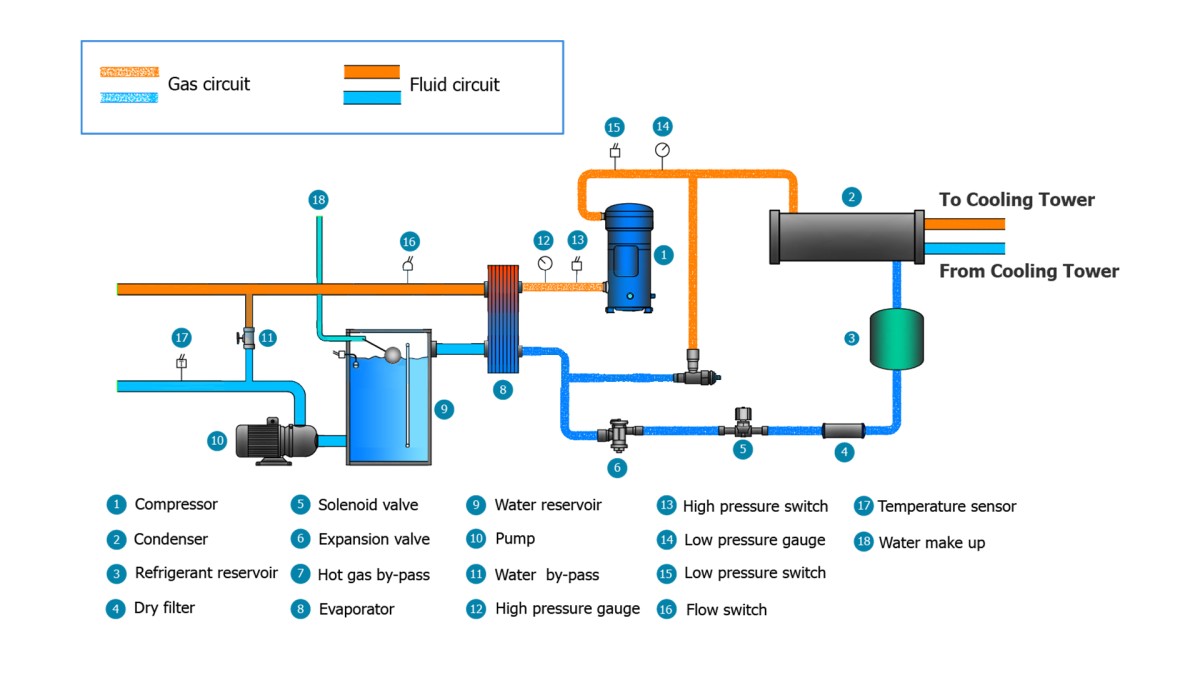
1. The chiller cleans the scale every quarter or every year
Choose high-quality chiller pipe cleaning agent to maintain the refrigeration cycle of industrial chiller. Of all the components, the cooler consumes the most energy, so regular cleaning and maintenance ensures its efficient and reliable operation. The performance of the chiller is related to its heat transfer efficiency through the pipe, which makes the pipe in the chiller like a circulation system, relying on heat transfer to achieve cooling effect. As coolant flows through the condenser tube, clogging reduces the efficiency of heat transfer in the cooler. Over time, sediment can accumulate inside the cooler tube, preventing heat from escaping and greatly reducing the cooling efficiency of the cooler. Pipe scaling can reduce the heat transfer efficiency by more than 15%, and permanent scaling or iron accumulation will further increase the heat transfer efficiency loss by 10% to 20%, so the cooler tube is cleaned every quarter or every year, in order to prevent the accumulation of various sediments, it is necessary to maintain the cooling pipe according to the manufacturer's instructions.
2. Reduce the condensate temperature.
Reducing the temperature of the water entering the condenser of an industrial chiller can significantly improve efficiency, and while not recommended as standard practice, reducing the water temperature of the condenser passing through the cooler can be used as a temporary solution to problems with its coils.
3. Check the condenser water circulation once a year.
Although many industrial chillers are closed-loop chillers, some chillers have water circulation in their condensers, utilizing open cooling sources such as air cooling towers. As a result of this environmental exposure, the water is susceptible to contamination by bacteria, corrosion, and scale, which, as we currently know, is not good. So the chilled water circuit should be checked at least once a year.
4. Pay attention to refrigerant leaks.
The cooling rate of a cooler depends on the amount of refrigerant circulating through its compressor. The valve stem sometimes vibrates loose, which can lead to refrigerant leakage. Compressor refrigerant leakage or moisture entering the system can affect the cooling capacity of the cooler. Therefore, pay attention to the problem of refrigerant leakage.
5. Measure the glycol concentration to prevent freezing.
Protecting system components from freezing is critical, as freezing can occur in the external environment or internal systems. Evaporators are prone to freezing even when operating normally. The fluid entering the evaporator must be able to pass through without freezing. The formation of ice can quickly restrict the flow, leading to further freezing and eventual rupture. The freezing point of the coolant must be well below any temperature at which the cooler can cool it.
Get In Touch
Please use the form below to get in touch.
If you need a reply we will get in touch as soon as possible.

